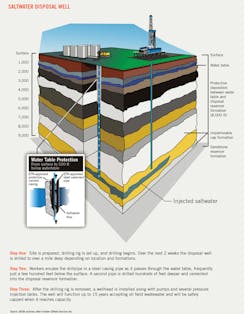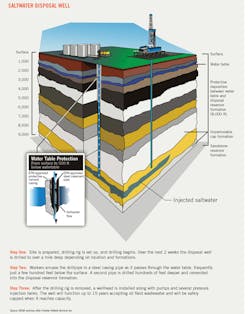Producing states receive guidance on managing induced earthquakes
Officials from oil-and-gas-producing states worked with scientists and industry advisors to compile a primer intended as a policy-guiding document to help states develop strategies to manage induced seismicity.
Thirteen states partnered through a StatesFirst initiative to issue the document, which stopped short of suggesting model regulations or legislation. The document was released during a Sept. 28 news conference in Oklahoma City.
Instead, the primer summarized knowledge about earthquakes potentially caused by human activity. StatesFirst partnered with the Interstate Oil and Gas Compact Commission (IOGCC) and Ground Water Protection Council (GWPC) to prepare the primer, which was discussed during IOGCC's midyear meeting.
"Overall the risk of induced seismicity for oil and gas operation is still low," said Rick Simmers, work group cochair and chief of the Ohio Department of Natural Resources, Division of Oil and Gas Resources Management.
He acknowledged more earthquakes have been reported per year in Oklahoma, Texas, Colorado, and Ohio within the last several years than were reported per year in previous decades.
"Induced seismicity is a complex issue where the base of knowledge is changing rapidly," said Rex Buchanan, seismicity working group cochair and interim director of the Kansas Geological Survey. "State regulatory agencies that deal with potential injection-induced seismicity should be prepared to use tools, knowledge, and expertise, many of which are offered in this primer."
Primer focuses on disposal wells
The primer primarily focused on potential induced seismicity associated with Class II disposal wells, which are regulated under the Safe Drinking Water Act through the Underground Injection Control Program.
The working group emphasized most US disposal wells do not pose a hazard for induced seismicity; however injection-induced earthquake activity often has been associated with direct injection into basement rocks or injection into overlying formations having permeable avenues of communication with the basement rocks, and in proximity to faults of concern.
"It is clear that local factors in different parts of the country present different levels of risk," Simmers said. "Risk management, mitigation, and response strategies are most effective when developed considering specific local geology…as well as other local situations."
He said induced earthquakes are far more like to be triggered by disposal wells than by hydraulic fracturing. More research is needed, Simmers and Buchanan told reporters during a webcast briefing on the primer.
The IOGCC is a multistate government organization focused on states having oil and gas reserves. The GWPC is a national association of state officials dealing with water protection.
The 13 states involved in the StatesFirst initiative were Alaska, Arkansas, California, Colorado, Illinois, Indiana, Kansas, Ohio, Oklahoma, Texas, Utah, West Virginia, and Wyoming. Not all those states have experienced induced earthquakes, researchers noted.

